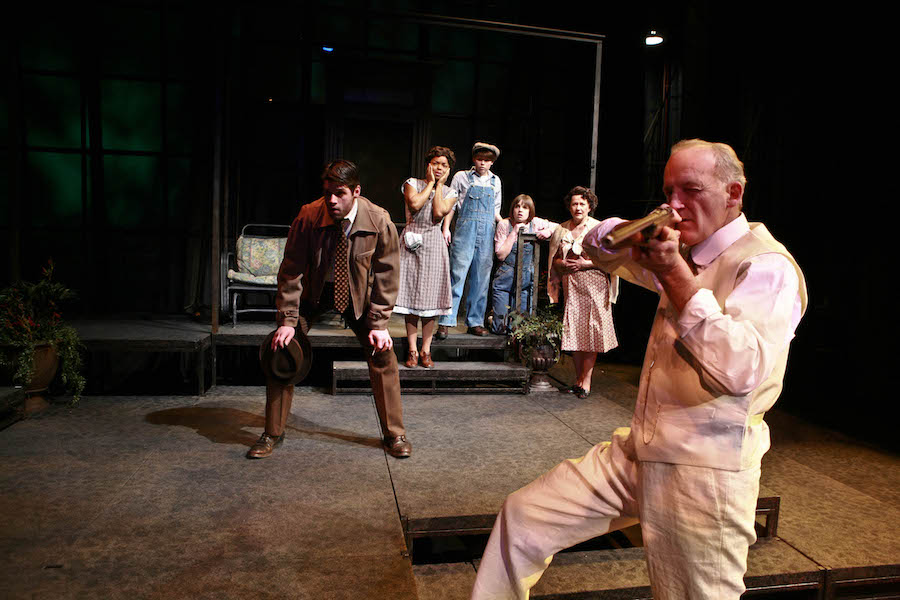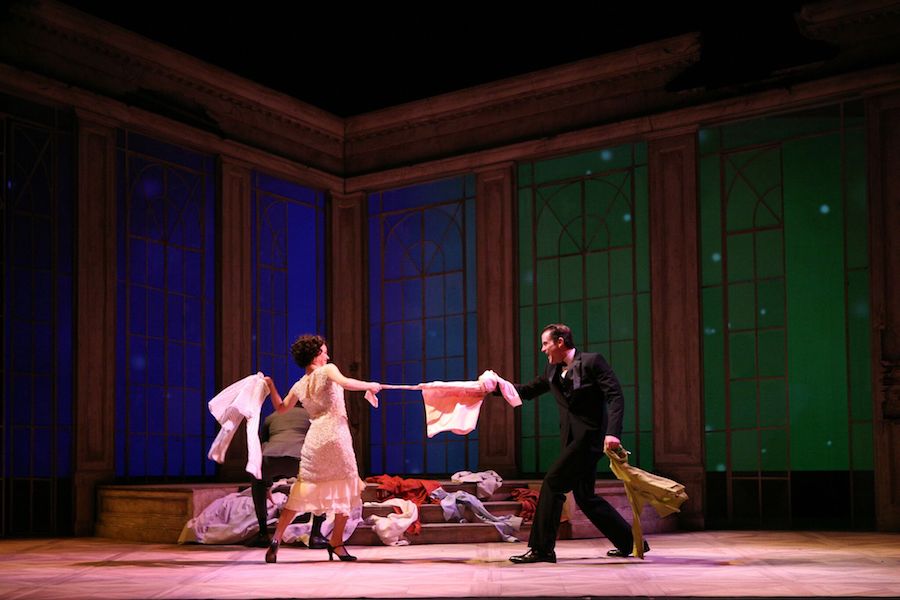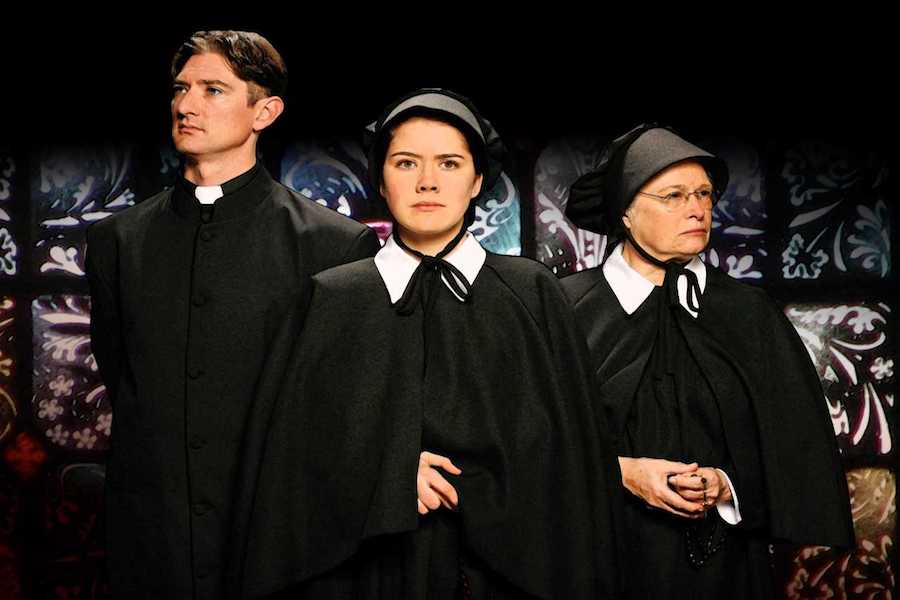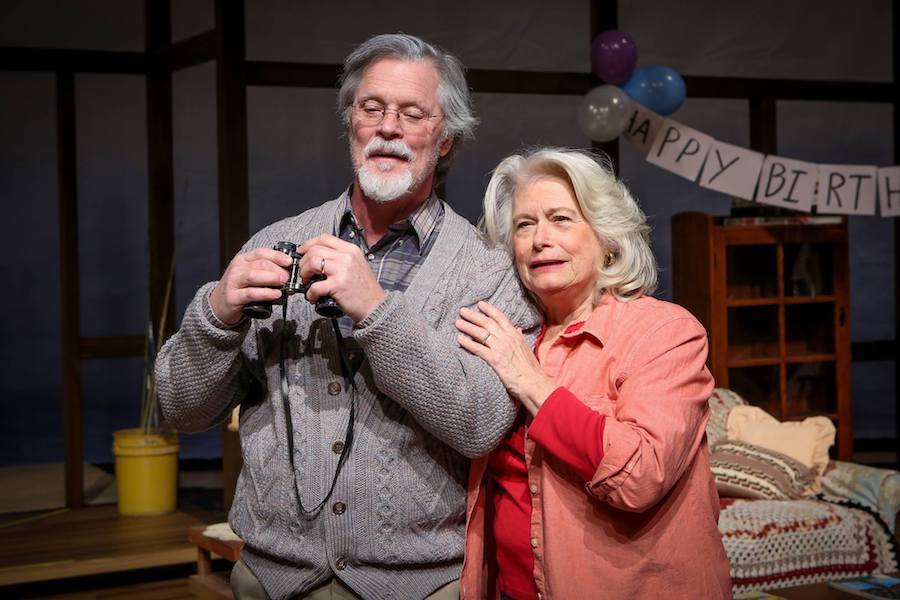MISSOULA, MONT.: In 1893, the University of Montana was built along the Clark Fork River at the foot of Mount Sentinel in the town of Missoula. The settlement of Missoula, once known for its mills and lumber industry, became home to the main campus of the state university, which is now one of the city’s largest employers. Montana Repertory Theatre resides at the university and tours plays throughout the state and across the country. We talked to artistic director Gregory Johnson to learn more about producing theatre in the “Big Sky Country” state.
Who founded the company, when, and why?
The company was founded in 1967 by Firman “Bo” Brown, at the time the chair of the theatre program at the University of Montana. The Montana Repertory Theatre was founded to be an artistic outlet of the newly formed graduate program in the School of Theatre & Dance at the University of Montana. It toured the state with grad and upper-level students. In 1987 the then-dean of the college, James Kriley, decided to turn it into a professional touring company using Equity actors, recruited from New York and Seattle, to work alongside the students. In 1995, with the production of To Kill a Mockingbird, and having hired a full-time booking agent out of New York City (Rena Shagan Associates), Montana Rep became a full-fledged national touring company.

Tell us about yourself and your connection to Montana Rep.
I came to the Montana Rep as artistic director in 1990 after working professionally in the theatre for 20 years in New York City. I worked on and Off-Broadway, and on national and international tours as an actor, stage manager, and director.
What sets your theatre apart from others in your region?
Montana Rep is the only national touring company in the region; it is one of the few Actors Equity theatres between Minneapolis and Seattle. For the past 25 years the company has been focused on the “Great American Stories,” investigating the essence of the American character.
How can the students at the university of Montana get involved with the company?
The relationship of the company to the training program at the University of Montana is unique: The students play major parts alongside their AEA counterparts, and the school is a full partner in the creation and execution of our productions. Students are deeply involved is all aspects of production, from acting to designing, from publicity to directing and stage managing. Our aim is to integrate the training program as thoroughly as possible with the professional theatre.
Who is your audience?
Our audience is the fly-over states. Our audience is the small towns all across America, colleges and communities who sponsor “Broadway Series.” We are usually the one non-musical presentation in many of these seasons. We play to towns as small as Plains, Mont. (pop. 1,017), Lexington, Ky., or Galveston, Texas.

Tell us about your favorite theatre institution other than your own, and why you admire it.
My favorite institution is the Public Theater. I had the great honor of working with and for Joseph Papp in the ’80s. His combination of theatrical vision, financial know-how, and sheer chutzpah has stayed with me for these three decades. The Public is where I grew up as a theatre artist; it informed my vision of the “good” and “necessary” and taught me the “how.” To this day one can walk into the Astor Place building and know you will see something thought-provoking and challenging. You may not like it, but you will not leave unmoved. This is the goal of theatre.

How do you pick the plays you put on your stage?
We consult with faculty and staff, and then, since we are in partnership with more than 50 presenters all over the country, we ask them what they would like to see on their stages. We present a slate of plays, usually three, to them and choose the one that receives the most enthusiastic response. Having said that, there are years when, in consort with the presenters, we try to move “out of the box” a bit.
What’s your annual budget, and how many artists do you employ each season?Our budget hovers around $800,000. We employ three AEA actors and one AEA stage manager per tour. In addition, we hire students under special contract providing a wage, per diem, college credit, and housing while on the road. Our road company ranges from 13-20, depending on the show.
What show are you working on now? Anything else in your season that you’re especially looking forward to?
Right now we have On Golden Pond on the road. We are looking forward to our annual summer playwriting gathering, the Missoula Colony, now in its 23rd year. I am personally looking forward to retirement. After 28 years at the helm, I am stepping down. We just completed a national search and have hired Michael Legg from Actor’s Theatre of Louisville to take my place. I am moving to New Orleans, where I intend to pursue opportunities in the Big Easy and enjoy the tastes and sounds of the Bayou.

What’s the strangest or funniest thing you’ve ever seen (or put) on your stage?
I think I have to say that Ken Ludwig’s Leading Ladies supplied me with the most belly laughs. This total romp of a play is a combination of Twelfth Night and Some Like It Hot, two of my favorite scripts. It is wickedly funny, and we had the company who could pull off this kind of heart-warming and rib-tickling farce.
What are you doing when you’re not doing theatre?
I walk my dog, Scout, visit friends, read, and enjoy my last months in the North Country. I’m also beginning to work on my first mystery novel.
What does theatre—not just your theatre, but the American or world theatre—look like in, say, 20 years?
On one end of the spectrum, smaller theatres—intimate spaces where humans, breathing, can be heard, and where the proximity to flesh and blood moments and actions are palpable; on the other end of the spectrum, glorious spectacle.


